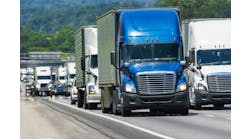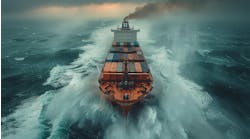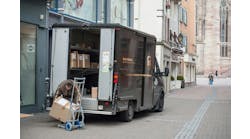| News Storm in the ports |
America’s ports are in trouble, says Theodore Prince, senior vice president of transportation solution provider Optimization Alternatives Ltd. (www.oax.com). “We don’t know our fixed and variable costs, quantitative analysis is shoddy or even fabricated, and Congress has been creating unfunded mandates by earmarking the funds so there is little funding available for needed developments,” he says.
“We’ve assumed the economic life of port infrastructure is shorter than the physical life, and the opposite may be true,” Prince observes, noting that structural issues extend beyond the ports and add to the threat that U.S. ports will become quickly outdated.
John Vickerman, principal of transportation consulting firm TranSystems Corp. (www.transystems.com), agrees, pointing out that ports and their associated intermodal systems can no longer build their way out of capacity problems.
“The U.S. intermodal freight transportation system is now being operated in many areas near the limits of economically sustainable capacity,” Vickerman observes. “We lack a systematic program for freight transportation planning and development that focuses our critical, scarce resources on key system problem points.”
The U.S. does not have an intermodal system as such, Vickerman points out. Instead, we have an aggregation of private and public modes, each stovepiped within their individual areas of interest with no true communication or collaboration.
At the heart of the problem is a rapid and continued rise in cargo volumes at U.S. ports. Most container ports are expected to continue historic trends and increase volumes two to three times by 2020. The U.S. intermodal system is operating near its limits of economically sustainable capacity in many areas, says Vickerman. The ports and the intermodal systems can no longer build their way out of this developing capacity crunch, while traffic growth threatens to overwhelm the system.
Terminal size has continued to increase, Prince notes, but the designs haven’t necessarily changed with the requirements.
One step in the right direction would be a national freight policy. “No longer can freight transportation programs of national significance be relegated solely to local authority or focused at the municipal planning organization level,” says Vickerman. “We must take a systematic view of the intermodal freight system.”
Prince calls for “real research” that analyzes local and national benefits of proposed infrastructure improvements. The true benefits of those improvements, however, may lie elsewhere.
“Ports have one product: lifts per hour,” he explains. They are constrained by space and facilities that are nearly obsolete the moment they are built. In addition, labor, technology and productivity contribute to the port’s attractiveness to shippers. Initiatives like the intermodal connector in the Alameda Corridor suffered from a lack of common sense. They forgot about trucks, says Prince. Bigger ships mean more containers, but truck lanes were cut from the project and actually increased congestion and decreased competition. Bottlenecks were merely relocated, not eliminated.
A better process is needed for planning and funding port infrastructure projects or traffic growth is going to overwhelm the system, Prince says.
Citing a study by the U.S. Chamber of Commerce, Vickerman says 75% of the 16 ports studied will have significant capacity problems by 2010. Capacity issues are greatest at some of the busiest U.S. ports: Los Angeles, Long Beach, New York/New Jersey, Charleston, Seattle, Tacoma, Oakland, Virginia and Houston. The study recommends the U.S. take a systematic view of the intermodal freight system. That includes the ports, railroads and motor carriers, but it also extends to shippers, non-vessel-operating common carriers (NVOCCs), stevedores and terminal operators, longshore labor, warehouse personnel and customs brokers.
The Port of New York/New Jersey is spending $19.5 million to develop ExpressRail service. The project involves 32 acres of terminal space and four loading tracks. Its annual design capacity is 150,000 lifts. Integrating the maritime and intermodal rail industries can produce higher productivity. But will it keep up with the evolution of the fifth-generation containership and its 7,500 20-foot-equivalent units (TEU) capacity?
Vickerman points to short-sea coastal feeders with 3,000 TEU capacity, container-on-barge, and high-speed, low-wake technology that will continue to increase container traffic. New concepts in marine terminals, like the Sea Point Marine Intermodal Terminal in New Orleans, may be needed to cope with rapid growth, but there are further limitations on the inland transportation system.
Information technology can help. Better organized, accurate and timely information between ship and rail can increase the velocity of a container through a terminal without changing equipment, management, or labor. LT
Feedback on this article?
© Want to use this article?
Click here for options!
Copyright© 2003 Penton Media, Inc.


